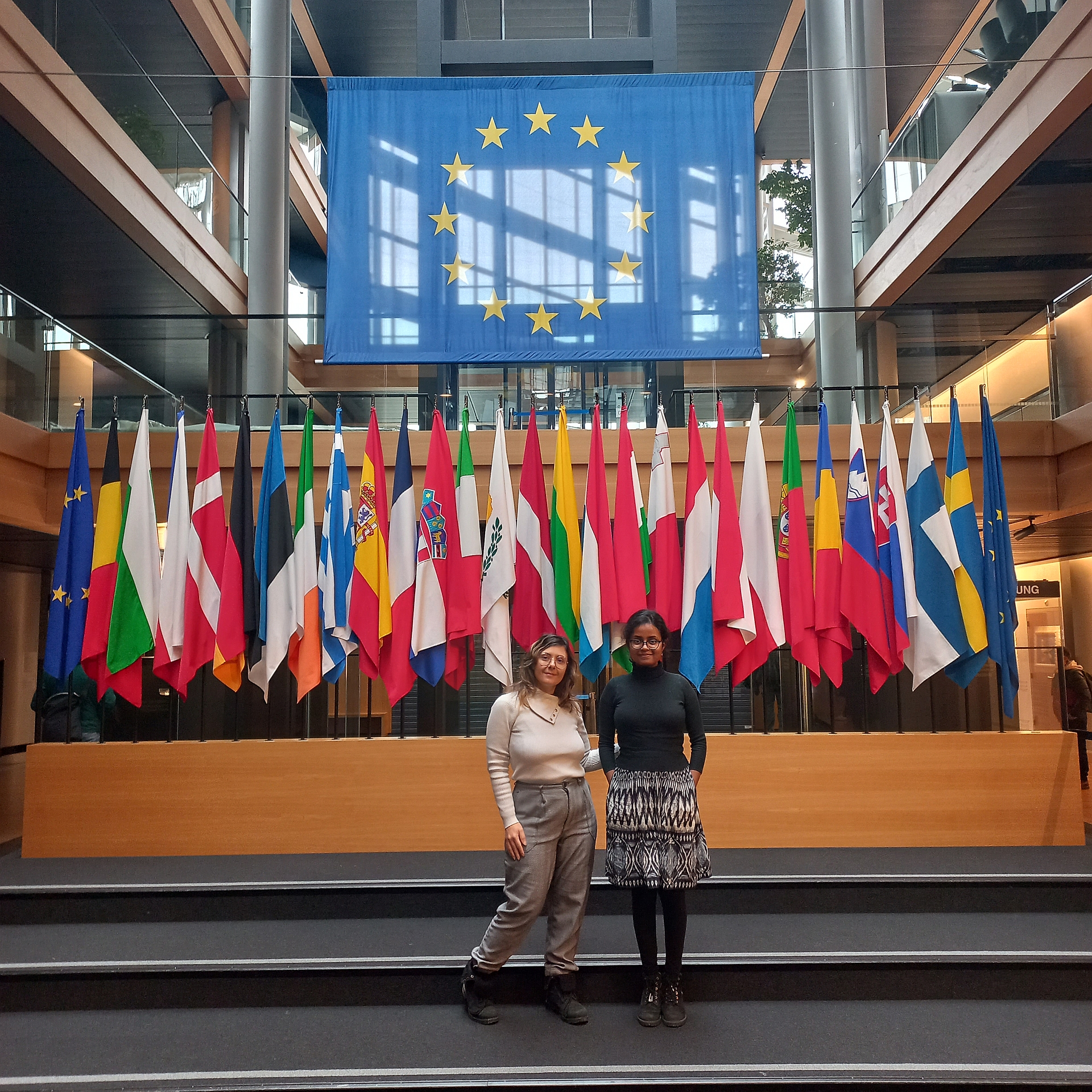Hallo! This is Vaidehi Roy Chowdhury (ESR11), and I am working under the supervision of Prof Michele Vendruscolo at the Centre for Misfolding Diseases in the Yusuf Hamied Department of Chemistry, University of Cambridge. Last November, I had the opportunity to undertake my second academic secondment, which took place at the Fraunhofer Institute for Interfacial Engineering and Biotechnology in Stuttgart, Germany.
The focus of my research in the Bio2Brain network is to develop rationally designed single-domain antibodies (also known as nanobodies) targeting pathological molecules, for delivery to the central nervous system via the nose-to-brain route. Nanobodies form attractive viable alternatives to conventional antibody-based therapeutics because of their efficacy coupled with smaller size, ease of engineering and production, higher solubility, and lower immunogenicity. A suitable strategy for the transmucosal delivery of CNS-targeting therapeutic nanobodies is their encapsulation in a mucoadhesive biocompatible drug-delivery system such as that based on chitosan, an FDA-approved drug carrier.
In my secondment, I learnt how to produce microparticles of chitosan and its chemically modified derivatives for encapsulation of model nanobodies. To produce these microparticles, we employed spray-drying, a common industrial process used to produce powder-based formulations of thermolabile substances such as pharmaceuticals and antibodies. We also monitored the release of functionally active nanobodies from the microparticles in physiological environments such as the thermochemical milieu found in the nasal mucosa.
Home to some of the world’s fastest and most coveted automobile brands, Stuttgart is a city of pace, progress, and excellence – traits that are also manifested in the accomplishments of the Fraunhofer Society. Fraunhofer IGB’s well-organised labs and collaborative atmosphere provided a suitable setting for this project. But the two weeks of my secondment were not just about work. In the weekend, we visited the European Parliament in Strasbourg, France. Stepping inside the Parliament’s hemicycle – the proscenium for decision-making in the world’s second largest democratic electorate and the largest across multiple sovereign nations – was a once-in-a-lifetime experience for me.
Like the myriad flavours of Ritter Sport, the last two weeks of November were filled with a flurry of diverse activities ranging from scientific training and collaboration to enjoying the arrival of Weihnachten with new acquaintances in the quintessentially German way. I would like to thank the Bio2Brain MSC-ITN for creating such a unique opportunity for interdisciplinary training and networking. I am grateful to Dr Gruber-Traub for hosting me in her lab, and for all the valuable insights that she has provided me. I would also like to thank my supervisor, Prof Vendruscolo, for allowing me to undertake this secondment and for his helpful suggestions to facilitate the experimental designs. I am grateful to Beatrice for her guidance and supervision, particularly for teaching me the concepts of drug carriers and spray-drying. I would also like to thank Ioanna Brenner, a Master’s student in the Gruber-Traub lab, as well as all the other members of Fraunhofer IGB, who facilitated the secondment training and made this learning experience smooth and enjoyable.

Freezing cold but super-excited for the workday ahead: Vaidehi Roy Chowdhury (ESR11) at Fraunhofer IGB, Stuttgart, Germany
